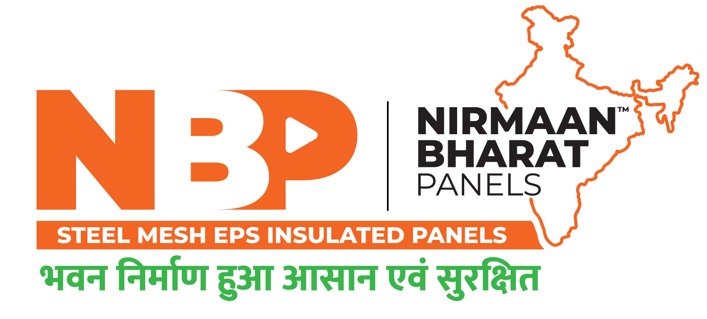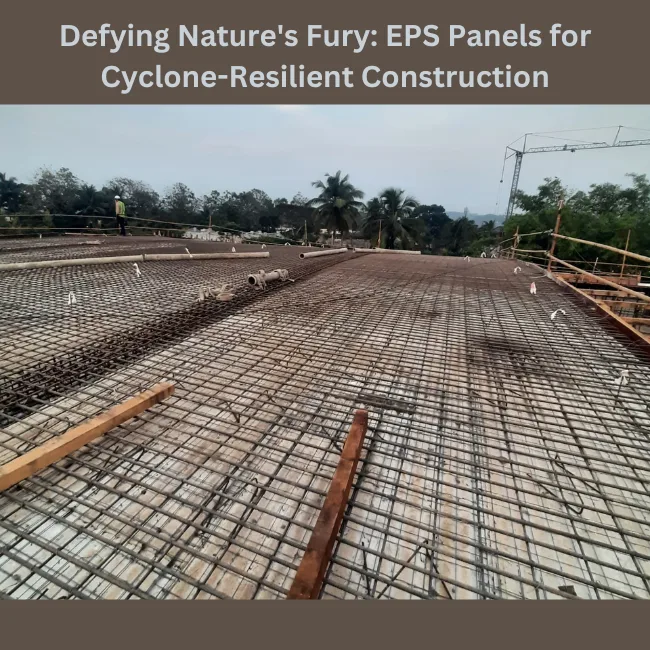In a world increasingly challenged by the wrath of climate change, the frequency and intensity of natural disasters like cyclones are on the rise. These catastrophic events wreak havoc on communities, infrastructure, and economies, leaving behind a trail of devastation. However, amidst the chaos, innovative solutions emerge to combat nature’s fury. One such solution is the use of Expanded Polystyrene EPS panels in construction, offering resilience against cyclonic forces. In this blog post, we delve into the benefits and applications of EPS panels in cyclone-prone regions, highlighting their role in creating safer and more sustainable structures.
Table of Contents
ToggleUnderstanding Cyclone Vulnerability:
Cyclones, also known as hurricanes or typhoons depending on the region, are powerful tropical storms characterized by strong winds, heavy rainfall, and storm surges. These intense weather phenomena pose significant threats to coastal and inland communities, often resulting in widespread destruction of buildings and infrastructure. Traditional construction materials, such as concrete and brick, are susceptible to structural damage and collapse under the force of cyclonic winds, exacerbating the impact of these disasters.
The Role of EPS Panels:
EPS panels, composed of expanded polystyrene foam encased within durable facings, offer a versatile and resilient alternative to conventional building materials. These lightweight panels possess excellent thermal insulation properties, contributing to energy efficiency and climate control within structures. However, their true strength lies in their ability to withstand the forces exerted by cyclones. The lightweight nature of EPS panels reduces the structural load on buildings, minimizing the risk of collapse during extreme weather events. Additionally, their flexibility allows for greater absorption of impact forces, providing enhanced protection against flying debris and windborne projectiles.
Benefits of EPS Panels in Cyclone-Prone Regions:
Structural Resilience:
EPS panels reinforce building structures, reducing the vulnerability to cyclonic winds and preventing catastrophic failures.
Energy Efficiency:
The thermal insulation properties of EPS panels promote energy conservation, reducing heating and cooling costs for occupants.
Rapid Construction:
Prefabricated EPS panels facilitate swift and efficient construction, enabling timely response and recovery efforts in cyclone-affected areas.
Sustainability:
EPS panels are environmentally friendly, as they can be recycled and reused, minimizing waste and supporting sustainable building practices.
Cost-Effectiveness:
Despite their superior performance, EPS panels are cost-effective compared to traditional building materials, offering long-term savings in construction and maintenance expenses.
Applications of EPS Panels:
EPS panels find diverse applications in cyclone-resilient construction, including:
Residential Buildings:
Incorporating EPS panels into residential structures enhances their durability and safety, providing peace of mind for homeowners in cyclone-prone regions.
Commercial Developments:
From office buildings to shopping malls, EPS panels offer reliable protection against cyclonic forces, safeguarding both property and occupants.
Infrastructure Projects:
Critical infrastructure such as schools, hospitals, and emergency shelters benefit from the resilience and rapid installation of EPS panels, ensuring continuity of essential services during cyclone events.
Retrofitting existing buildings with EPS panels strengthens their resistance to cyclonic winds, mitigating the risks posed by aging infrastructure in vulnerable areas.
Case Studies:
Several real-world examples demonstrate the effectiveness of EPS panels in cyclone-resilient construction. In regions prone to frequent cyclonic activity, such as the Gulf Coast of the United States and coastal areas of Southeast Asia, EPS panel installations have proven instrumental in reducing damage and enhancing building resilience. Case studies highlight the successful implementation of EPS panels in various building types, underscoring their versatility and adaptability to diverse architectural designs and climatic conditions.
Conclusion:
In the face of escalating climate-related risks, the adoption of innovative building materials and techniques is paramount to creating resilient communities and infrastructure. Expanded Polystyrene (EPS) panels emerge as a frontrunner in cyclone-resilient construction, offering a potent combination of structural strength, energy efficiency, and sustainability. By harnessing the power of EPS panels, architects, engineers, and policymakers can fortify buildings against nature’s fury, ensuring a safer and more sustainable future for generations to come.
Also, Read
Top 10 Facts About ESP Panel Construction
FAQs
1. What are EPS panels, and how do they contribute to cyclone-resilient construction?
EPS panels are building materials composed of expanded polystyrene foam enclosed within durable facings. These panels enhance cyclone resilience by offering structural reinforcement against high winds, minimizing the risk of building collapse during extreme weather events.
2. How do EPS panels compare to traditional building materials in cyclone-prone regions?
Unlike traditional materials like concrete and brick, EPS panels are lightweight and flexible, reducing the structural load on buildings and enhancing resistance to cyclonic forces. Their ability to absorb impact and withstand flying debris makes them an ideal choice for cyclone-resilient construction.
3. Are EPS panels cost-effective for cyclone-resilient construction?
Yes, EPS panels offer cost-effectiveness compared to traditional materials. Despite their superior performance in cyclone-prone regions, EPS panels are affordable and provide long-term savings in construction and maintenance expenses.
4. Can EPS panels be used in retrofitting existing structures for cyclone resilience?
Absolutely. EPS panels are versatile and can be retrofitted onto existing buildings to strengthen their resistance to cyclonic winds. This retrofitting process reinforces the structure and reduces vulnerability to damage during cyclone events.
5. Do EPS panels offer any environmental benefits in cyclone-resilient construction?
Yes, EPS panels are environmentally friendly. They can be recycled and reused, minimizing waste and supporting sustainable building practices. Additionally, their energy-efficient properties contribute to reduced carbon emissions and promote eco-friendly construction.
6. Are EPS panels suitable for both residential and commercial construction in cyclone-prone areas?
Yes, EPS panels find applications in both residential and commercial construction projects. Whether it’s single-family homes or large-scale commercial developments, EPS panels offer reliable protection against cyclonic forces, ensuring safety for occupants and safeguarding property.
7. How do EPS panels facilitate rapid construction in cyclone-affected regions?
Prefabricated EPS panels enable swift and efficient construction, allowing for timely response and recovery efforts in cyclone-affected areas. Their ease of installation and lightweight nature expedite the building process, supporting the quick restoration of infrastructure and communities following cyclone events.


